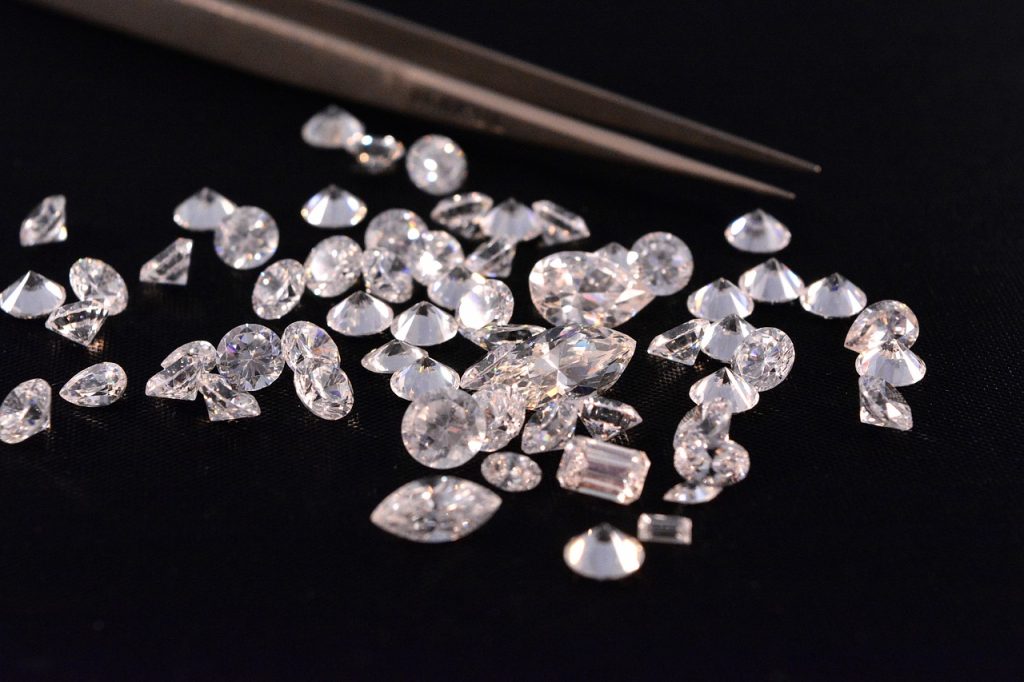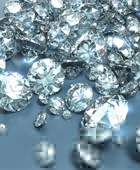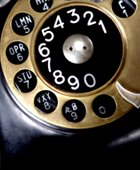Diamonds are universally regarded as symbols of elegance, love, and prestige, but not all diamonds are created equal. While classic white (or colorless) diamonds have long been cherished for their timeless appeal, colored diamonds offer a captivating alternative with unique characteristics that set them apart. Whether you’re selecting a diamond for an engagement ring, an investment, or simply to add to your jewelry collection, understanding the nuances between colored diamonds and white diamonds can help you make the best choice. Let’s dive into the fascinating world of diamonds, comparing their allure, properties, value, and more.

The Allure of Classic White Diamonds
Classic white diamonds, often referred to as colorless diamonds, have captivated the hearts of people for centuries. They represent the epitome of grace, beauty, and tradition. The appeal of these diamonds lies in their brilliance and ability to reflect light in a way that no other gemstone can.
1. Timeless Elegance:
White diamonds have a universal appeal because of their neutral, colorless nature. This versatility allows them to pair effortlessly with all types of metals, outfits, and settings. The clean, icy appearance of a high-quality white diamond exudes sophistication and classic beauty, making it a popular choice for engagement rings, wedding bands, and formal jewelry.
2. The 4Cs of White Diamonds:
The quality of a white diamond is typically judged based on the 4Cs: Carat, Cut, Color, and Clarity. While the carat measures weight, the cut determines how well the diamond reflects light. The color of a diamond is graded on a scale from D (completely colorless) to Z (light yellow or brown). In general, the more colorless a white diamond is, the higher its value. Clarity refers to internal imperfections or inclusions. White diamonds with fewer inclusions are considered more valuable and desirable.
3. Investment Value:
White diamonds are widely regarded as a stable investment. Because they are so common in the jewelry market, their value tends to be more predictable and consistent over time. Larger white diamonds, particularly those that are colorless, have high clarity, and are well-cut, can appreciate in value, making them a safe option for buyers who prioritize investment over aesthetics.
4. Versatility:
Another advantage of white diamonds is their versatility. Their neutral color makes them compatible with virtually any setting or metal—yellow gold, rose gold, platinum, or silver. Whether set in an engagement ring, pendant, or earrings, white diamonds maintain an elegant and timeless look that works for every occasion, from everyday wear to the most formal events.
The Enchantment of Colored Diamonds
While white diamonds are revered for their classic beauty, colored diamonds bring an element of surprise, rarity, and personal expression. These diamonds, often referred to as “fancy diamonds,” are available in a spectrum of colors, including blue, pink, yellow, green, and even red. Their hues, caused by the presence of specific trace elements during the diamond’s formation, make them one of the most unique and eye-catching types of gemstones.
1. Rarity:
The most distinguishing feature of colored diamonds is their rarity. While white diamonds are more commonly found, colored diamonds represent a smaller percentage of all diamonds mined, with certain colors like red, blue, and green being extremely rare. The rarity of colored diamonds contributes significantly to their value, making them highly sought after by collectors and investors.
2. Unique Colors and Their Meanings:
Each colored diamond has its own symbolic meaning and emotional impact, adding a layer of personal significance to the jewelry. For instance:
- Pink Diamonds: Often associated with love and romance, pink diamonds exude femininity and elegance. They are among the rarest and most valuable colored diamonds.
- Yellow Diamonds: Bright and sunny, yellow diamonds symbolize optimism, energy, and happiness. The intensity of the yellow hue can vary, with deeper shades being more valuable.
- Blue Diamonds: Deeply evocative and mysterious, blue diamonds, like the famous Hope Diamond, are connected with royalty and prestige. Blue diamonds are rare and command high prices in the market.
- Green Diamonds: These diamonds are known to symbolize growth, renewal, and vitality. Green diamonds are also incredibly rare and are often prized by those who desire something truly unique.
- Red Diamonds: The rarest of all, red diamonds are often linked with passion, power, and strength. Their scarcity makes them among the most expensive colored diamonds in the world.
3. The Grading of Colored Diamonds:
While white diamonds are graded on how colorless they are, colored diamonds are graded based on the intensity of their hue. The Gemological Institute of America (GIA) classifies them into nine grades, ranging from Faint to Fancy Vivid. Diamonds with more intense and vivid colors are typically more valuable. Unlike white diamonds, clarity plays a lesser role in the value of colored diamonds, as the primary focus is on the saturation and richness of the color.
4. Investment Potential:
Colored diamonds can be excellent investments due to their rarity. In particular, pink, blue, and red diamonds have seen substantial price increases in recent years, with some fetching record-breaking prices at auction. Their rarity and the increasing demand for unique, luxurious items ensure that colored diamonds often appreciate in value at a faster rate than their white counterparts. Investors who are looking for exclusivity and rarity may gravitate toward colored diamonds as a long-term investment.
Comparing Aesthetics: The Bold vs. the Classic
When it comes to choosing between colored and white diamonds, aesthetics play a crucial role. The visual appeal of each type of diamond is distinctly different, and your choice depends largely on personal preferences and the occasion for which you are buying the stone.
1. The Subtle Brilliance of White Diamonds:
White diamonds are cherished for their brilliance and sparkle. A well-cut white diamond reflects light in a way that creates maximum fire (the dispersion of light into colors) and scintillation (the sparkle effect when a diamond moves). This intense sparkle is what makes white diamonds so visually striking. For those who value subtle elegance and a stone that complements rather than commands attention, white diamonds are a perfect choice. Their neutral tone also allows them to blend seamlessly with various outfits and settings, making them ideal for everyday wear or formal events.
2. The Vibrancy of Colored Diamonds:
Colored diamonds, on the other hand, offer a bold and unique statement. The vibrant hues of a colored diamond are the focal point of the stone, drawing the eye immediately to its color rather than its brilliance. For example, a pink or blue diamond has an intrinsic allure that makes it a standout piece, often perceived as a work of art. Those looking to make a statement or who prefer non-traditional jewelry may find that colored diamonds better reflect their personality.
3. Enhancements and Treatments:
While white diamonds are often left untreated, colored diamonds may undergo enhancements to intensify their hue. Some colored diamonds, such as yellow or brown, are irradiated or treated to deepen their color. This practice, while making these diamonds more affordable, may affect their long-term value. Natural, untreated colored diamonds, especially in rarer colors, hold greater value and are more desirable to collectors and investors.
Durability and Wearability
Both colored and white diamonds score a perfect 10 on the Mohs scale of hardness, making them the hardest known material on earth. This means that diamonds are incredibly durable and resistant to scratches. However, there are slight considerations to keep in mind when comparing the two types of diamonds in terms of wearability.
1. White Diamonds:
White diamonds are highly durable and maintain their sparkle and clarity with proper care. Because of their colorless nature, however, they may reveal dirt, oils, or other substances more easily, requiring regular cleaning to maintain their brilliance. Still, white diamonds can endure daily wear and are often chosen for engagement rings and other pieces meant to be worn frequently.
2. Colored Diamonds:
Like white diamonds, colored diamonds are also durable and suitable for daily wear. However, their vibrant colors might mask imperfections and dirt better than a colorless diamond. In some cases, certain colored diamonds may be slightly more fragile if they contain internal inclusions or have undergone treatments. Thus, it is important to choose a setting that protects the stone, especially for softer or more treated stones like enhanced yellow diamonds. That said, untreated colored diamonds, particularly those of vivid hues, can maintain their brilliance for a lifetime.
Choosing the Right Diamond for You
Making the right decision between a white and colored diamond ultimately comes down to several factors, including your personal taste, intended use, and budget. Below are some considerations to help guide your decision:
1. Occasion and Purpose:
For engagement rings and traditional jewelry, white diamonds are often the first choice because of their universal appeal and ability to pair with virtually any setting. Their classic appearance makes them a safe option for significant life events. On the other hand, colored diamonds may be more suitable for unique milestones or as statement pieces. A colored diamond ring or pendant can symbolize something personal and exceptional, adding a layer of individuality to your jewelry collection.
2. Investment Considerations:
White diamonds tend to hold their value steadily, particularly high-quality stones with superior grades in cut, clarity, and color. If you are looking for a safe investment, a large, flawless white diamond could be a prudent choice. However, the rarity of certain colored diamonds, particularly pink, blue, and red, makes them a potentially more lucrative investment. As supply diminishes and demand rises, these colored diamonds often increase in value faster than white diamonds, but they also carry higher initial price points.
3. Personal Expression:
If you are someone who enjoys wearing unique and bold pieces that reflect your personality, a colored diamond might be a better fit. They allow for self-expression through color and can be chosen to represent specific emotions, values, or even milestones in your life. For example, pink diamonds are often chosen to commemorate romantic occasions, while blue diamonds can be symbolic of depth and tranquility.
4. Budget:
While white diamonds are available in a wide range of prices depending on their quality, colored diamonds can sometimes carry a premium, especially for rare colors such as red, blue, or vivid pink. However, there are more affordable options in the colored diamond spectrum, such as yellow or brown diamonds, which can be a cost-effective yet stunning choice.
Conclusion: The Right Diamond for You
Choosing between a colored diamond and a classic white diamond is not a matter of which is better, but rather which is better for you. White diamonds offer timeless beauty, versatility, and investment stability, making them the go-to choice for traditional occasions like engagements. Their brilliance and neutral color ensure that they will always be in style. Colored diamonds, with their rarity, bold hues, and potential for value appreciation, offer a unique alternative for those seeking something distinct, personal, and expressive.
In the end, the decision should reflect your personal style, the significance of the purchase, and how you plan to enjoy the diamond over time. Whether you choose the classic allure of a white diamond or the vibrant individuality of a colored stone, both options offer unparalleled beauty and luxury. With proper research and understanding of your preferences, you can confidently choose the diamond that’s perfect for you.




